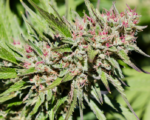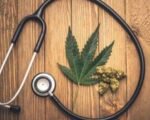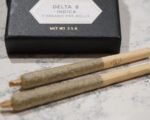With more and more states, cannabis cultivators and connoisseurs are turning into LED grow lights in substantial numbers for their indoor grows. Is this a fad or is LED technology the future of indoor growing?
As more indoor growers can produce a top-shelf solution, the tide has turned in favor of their LEDs. Here we offer some critical factors so you can choose wisely when investing in LED grow lights.
Benefits Of LEDs
By now most growers know the advantages of using LEDs for indoor growing–no scorching hot mature bulbs, lower electricity bills, healthier plants with excellent taste and scent. The jury is still out on some other benefits, like the LEDs’ ability to deter insects and bacteria.
What we do understand is that LEDs are an excellent way to substitute away from energy-intensive HPS and metal halide bulbs; this is just if your light can produce enough of a harvest.
The ideal LED grow lights will give great returns.
For several years LED grow lights weren’t producing the same returns as their high heeled sodium counterparts. Grow light technologies has progressed greatly and top-shelf LEDs such as the G8LED 600W Veg/Flower with UV and IR are able to supply comparable yields to the tried and true 1000W HPS bulbs.
This wonderful light generates healthy plants with vigorous development and tight intermodal spacing to get fuller returns. The advantage of this LED is that it operates at a far lower temperature, consuming less than half the power and gives the grower more control over its own plants. With those lights, cannabis plants grown indoors will have a superb scent, taste and frostiness.
For each square foot of growing space, there should be 20 or more watts (measurement of power) being consumed by the LED grow light. For a 4-ft by 4-ft grow distance (16 square feet), your light should have a power draw of at least 320 watts.
Remember the energy draw of this light will be lower compared to the wattage from the name. Manufacturers tend to name LED grow lights by the total quantity of wattage from the processors used, though those chips are not operating at full capacity. The actual electricity use will always be less for layout security.
The wattage, or power draw of usage, is the amount that needs to be considered when calculating 20 g per square foot of growing space.
The best LED grow lights reduce electric consumption by as much as 60 percent.
Photosynthetic Photon Flux (PPF)
PAR value is that the photosynthetic photon flux, measured in micromoles (μmoles) per meter squared per second.
If that sounds confusing, do not fret as we will attempt to simplify this metric.
Photosynthesis is the process by which plants use sunlight (or indoor grow lighting) to synthesize foods from carbon dioxide and oxygen and give off oxygen as a by-product, resulting in plant development. The number of photons of light determines the photosynthetic photon flux mentioned above.
Natural sun has a PAR worth of 1200-1400 micromoles (μmoles). An effective increase light will have a PAR value between 800-1400μmoles. Using lighting with greater PAR values may be counterproductive and cause stunted development of plants.
The different wavelengths of light decide different colors that enter the grow light. Since the entire point of using LEDs is to reduce energy consumption, it’s crucial to go with an efficient unit that maximizes photosynthesis.
This means that the best LED grow lights will probably be targeting anywhere from six to eight different wavelengths of the light spectrum. If you have less than six wavelengths, then the lighting is not advanced enough for robust growth. In case the light contains more than two wavelengths, it is wasting electricity by exposing parts of the light spectrum that the plants do not need. This waste leads to reduced yields and extra heat.
With LEDs, it is likewise possible to emit ultraviolet light, which isn’t feasible with traditional bulbs. LED grow lights that emit UV have the added advantage of rising resin formation on the plant and helping to deter pests at the grow area. Growing with a grow light which has UV diodes increase the effectiveness of your crop.
Following the choice of the plant strain, light is the crucial part of the indoor grow backyard. Investing in top-shelf lights like G8LED or Blackdog provides dividends for many years to come. These lights allow growers to run their performance at much lower prices and produce excellent harvests. LED grow lights would be the future of indoor climbing. It’s exciting to find this revolutionary technology transform indoor gardens around the world.
David Johnson is a respected writer known for his expertise in crafting compelling articles about cannabis. With a passion for exploring the intersection of cannabis, health, and wellness, he sheds light on the therapeutic properties and potential uses of this versatile plant. David’s in-depth analysis and thought-provoking commentary offer readers a deeper understanding of the evolving landscape of cannabis legislation, consumption methods, and industry trends.









